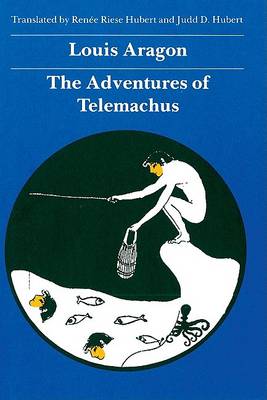French Modernist Library
2 total works
Published in 1922 and modeled on Fenelon's seventeenth-century epic of the same name, Aragon's work parodies its heroic models, didacticism, psychological stability, and descriptive and narrative balance.
Surprising juxtapositions like goats spread across pianos and fearful optical illusions like eyeballs being sliced characterized the surrealistic movement in the arts in 1928 when Louis Aragon published Traite du Style in Paris. Aragon had become ever more contemptuous of vogues and pretensions. In the name of surrealism, he produced the first significant critique of it. Instead of merely upsetting old relationships and skewering sensibilities, Traite du Style was meant to shock with a capital S, and it did. Only now has it been completely translated into English. Although time has attenuated the scandalous nature of Aragon's language, his criticism has lost none of its edge in this translation by Alyson Waters. From the beginning, which describes a postcard showing a little boy on a potty as representative of French humor and the French spirit, to the end, an attack in scatalogical language on the French military establishment, Aragon zeros in on one target after another. Nothing escapes his notice or venom-whether it is the masturbatory output of contemporary writers, the prostitution of culture, or the perversions of government.
Still, Treatise on Style is more than a brilliant diatribe directed against what Aragon perceived as the moral, political, and intellectual failures of his time. He proposes surrealism, in art as in life, as a means to achieve a valid ethical and aesthetic "style." Surrealism, as Aragon defines it here, loses some of its mythical and mystical trappings; it becomes inspiration with rolled-up shirt-sleeves. He exercises this faculty in his own writing, which aims to shake readers out of their complacency by alternating the intensely lyrical with the borderline obscene and juxtaposing the language of the educated elite with that of the street. Whether denouncing religious fantacism or dispensing praise, Aragon remains true to his idea of the surrealist project: to reclassify certain values through the act of writing itself. Treatise on Style entertains as a portrait of a movement and of a personality who kept moving.
Still, Treatise on Style is more than a brilliant diatribe directed against what Aragon perceived as the moral, political, and intellectual failures of his time. He proposes surrealism, in art as in life, as a means to achieve a valid ethical and aesthetic "style." Surrealism, as Aragon defines it here, loses some of its mythical and mystical trappings; it becomes inspiration with rolled-up shirt-sleeves. He exercises this faculty in his own writing, which aims to shake readers out of their complacency by alternating the intensely lyrical with the borderline obscene and juxtaposing the language of the educated elite with that of the street. Whether denouncing religious fantacism or dispensing praise, Aragon remains true to his idea of the surrealist project: to reclassify certain values through the act of writing itself. Treatise on Style entertains as a portrait of a movement and of a personality who kept moving.

